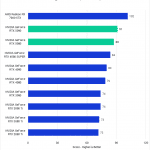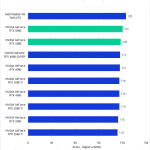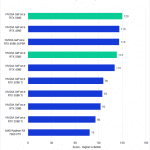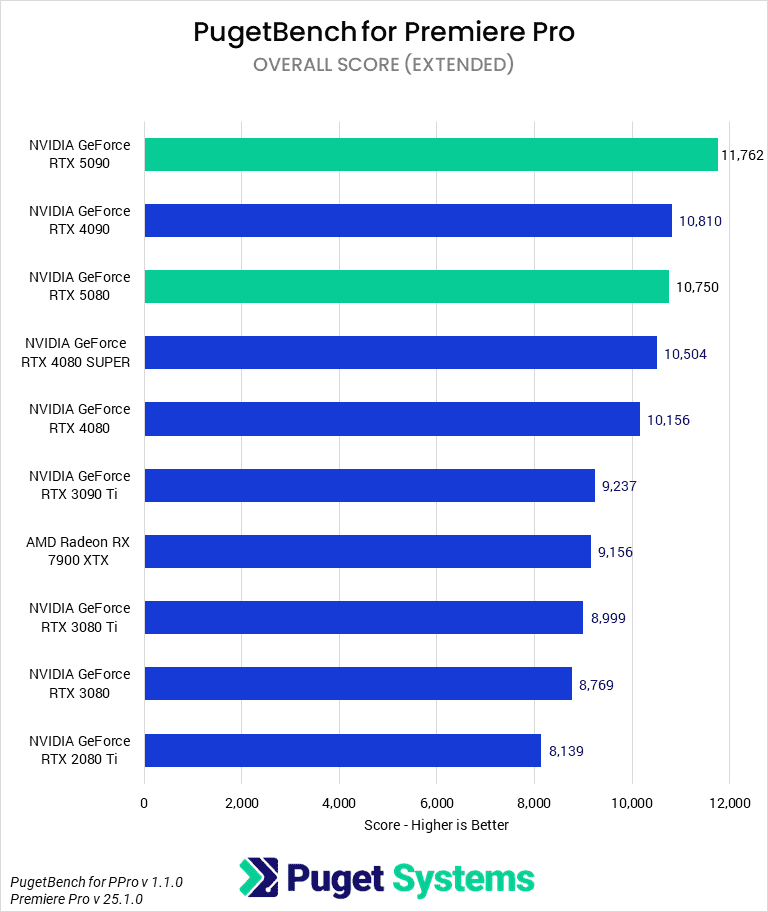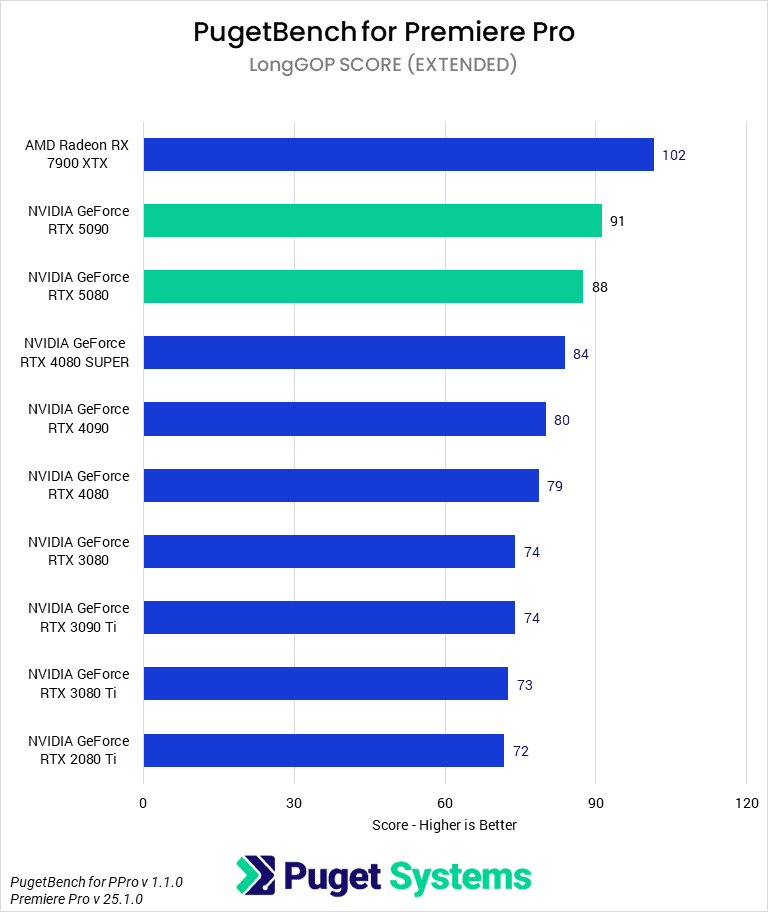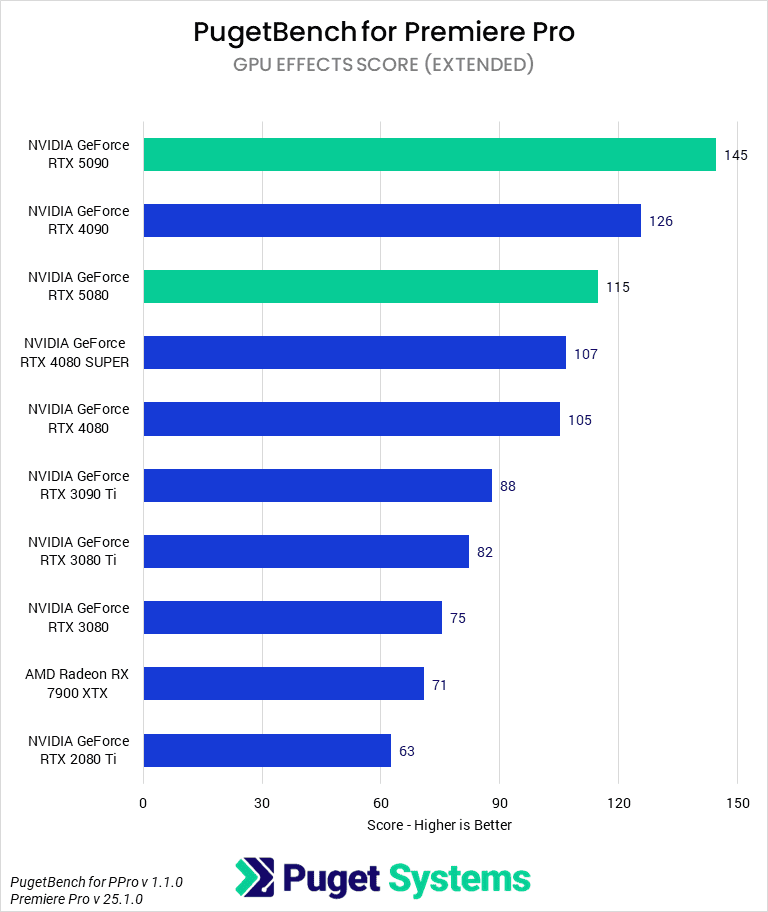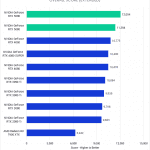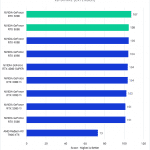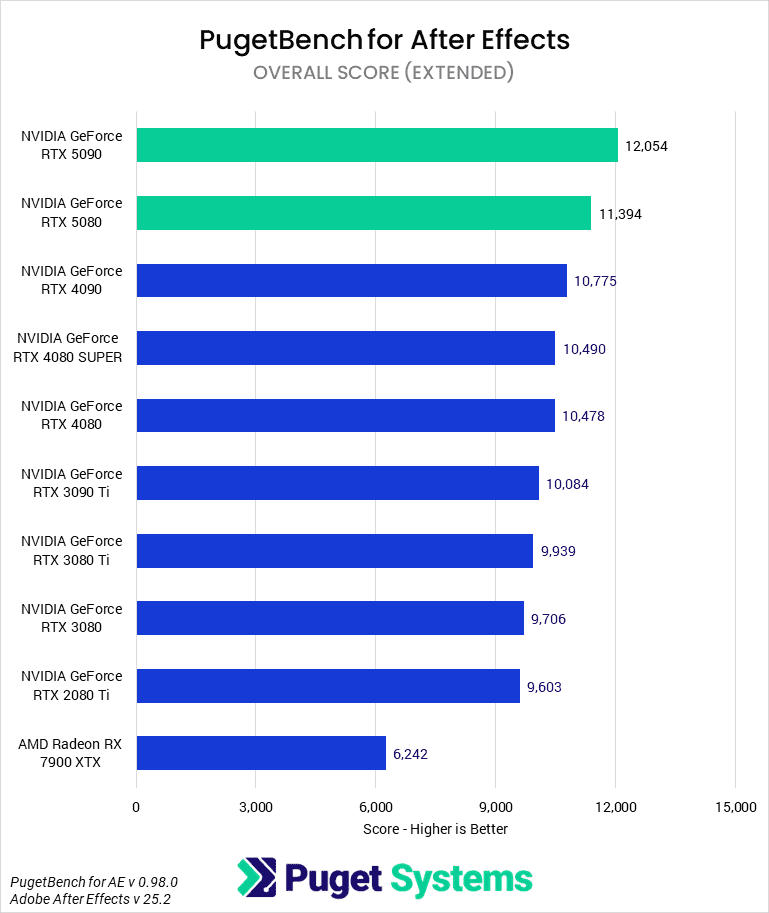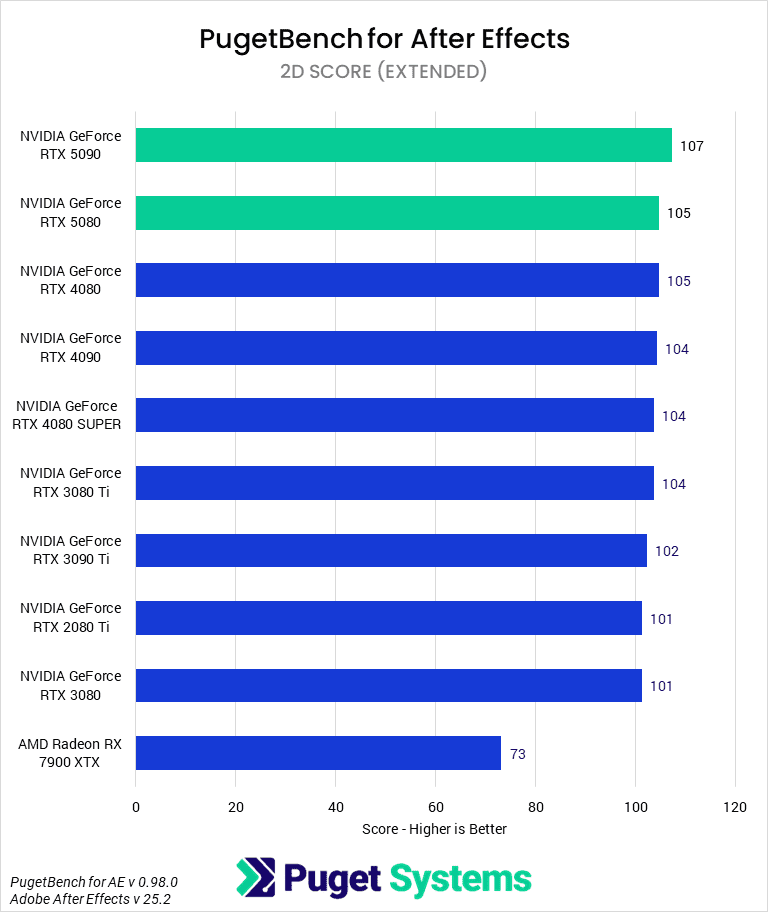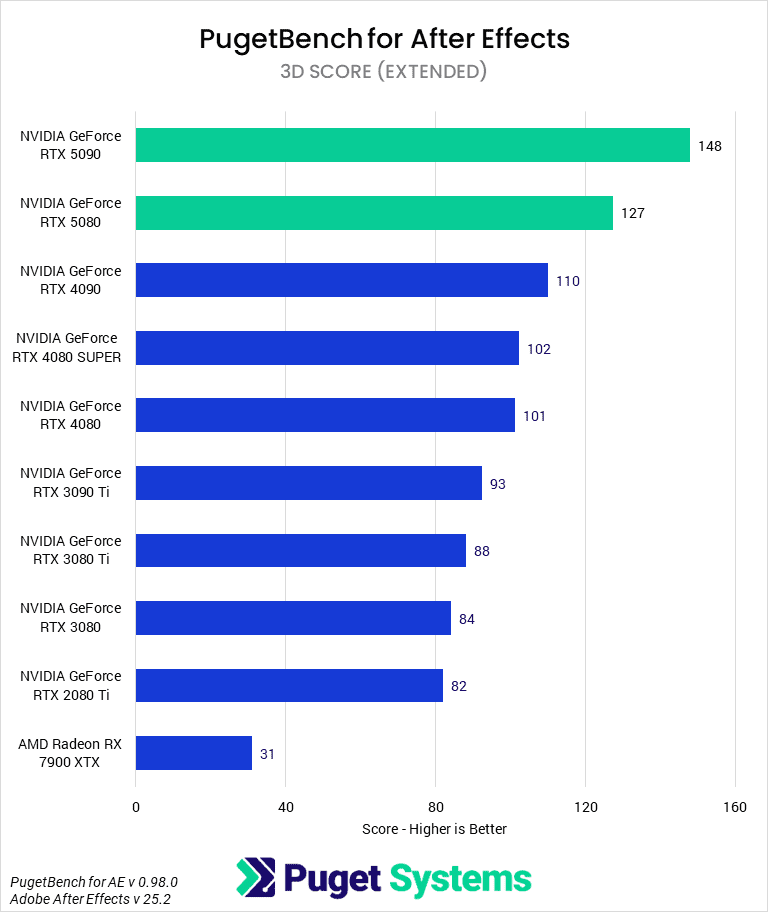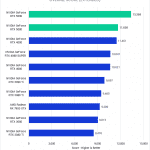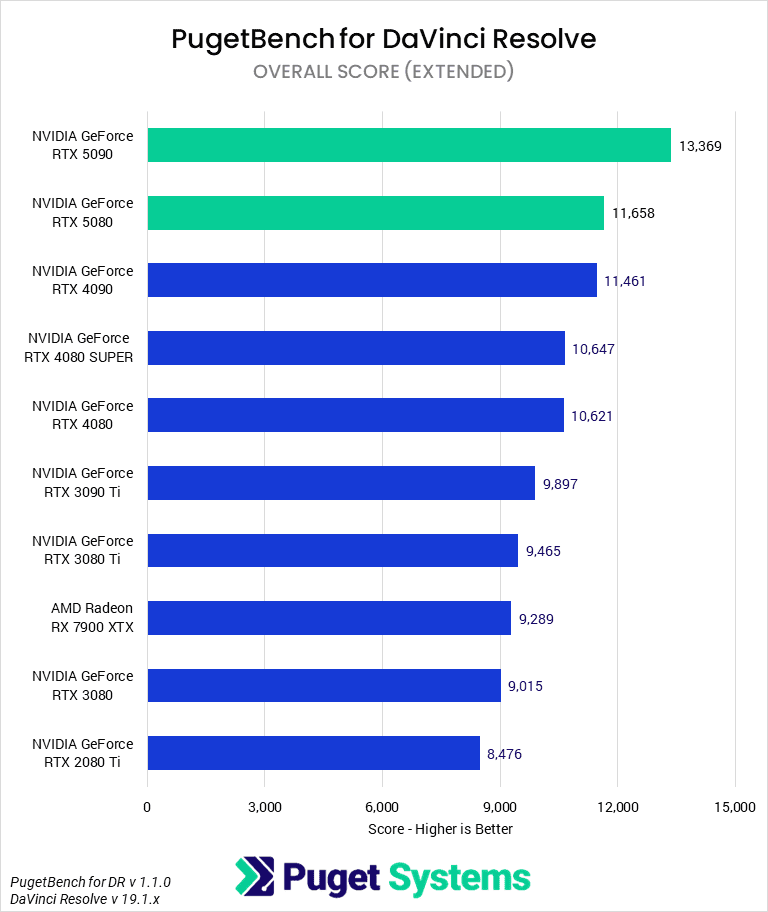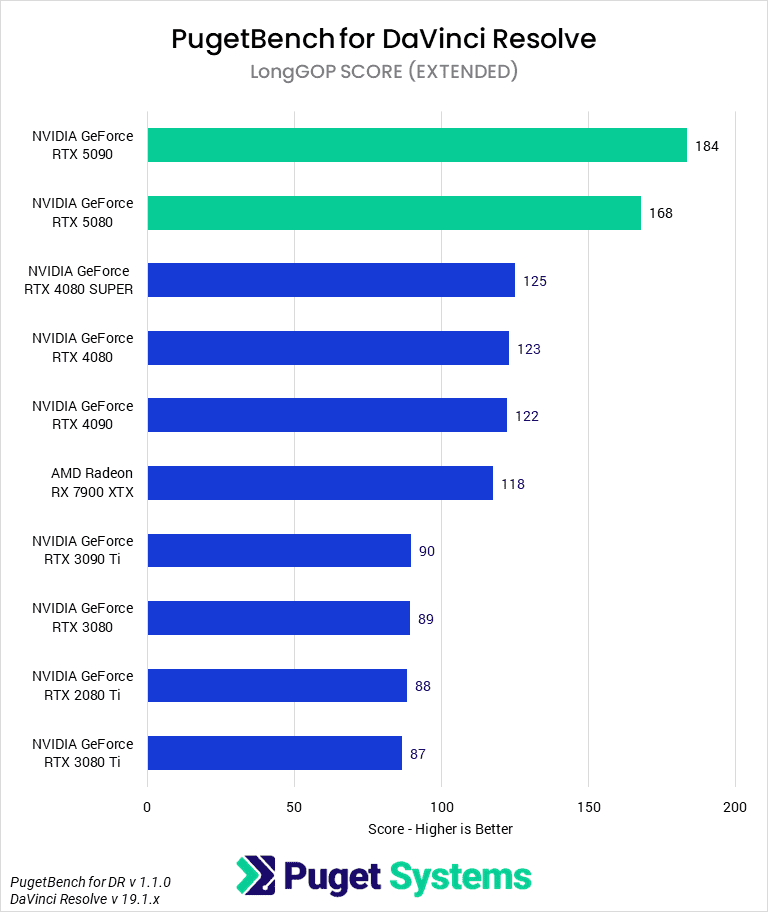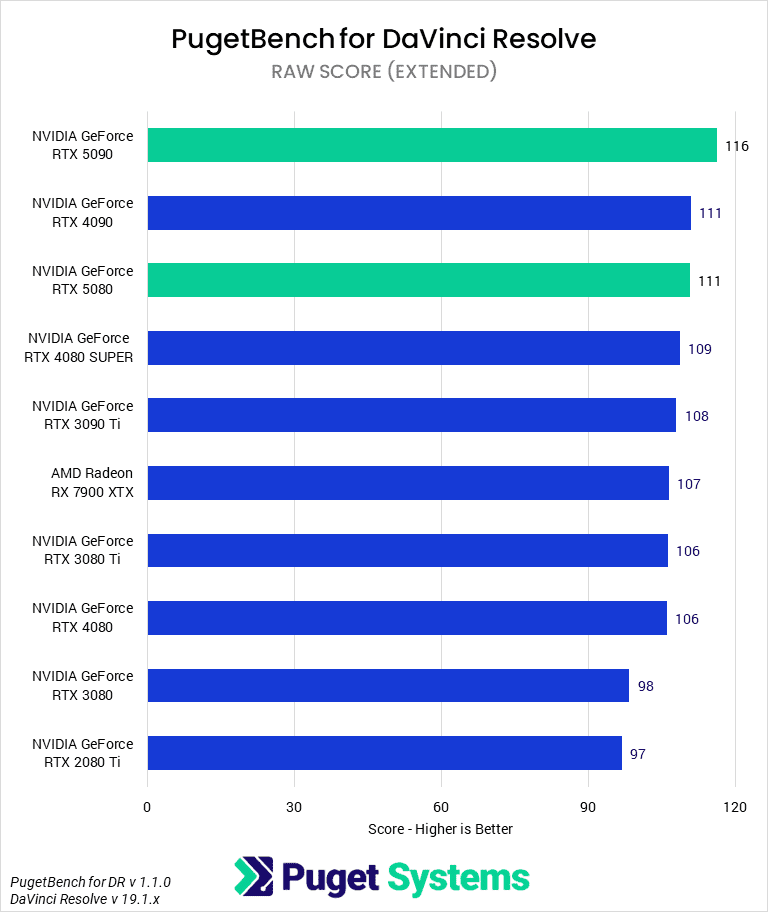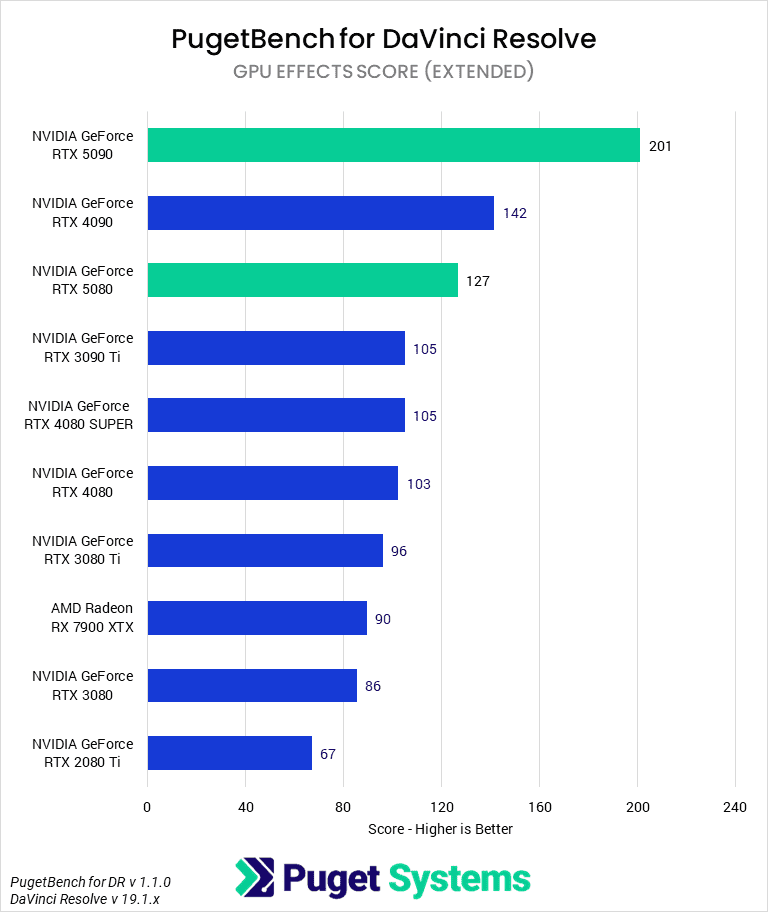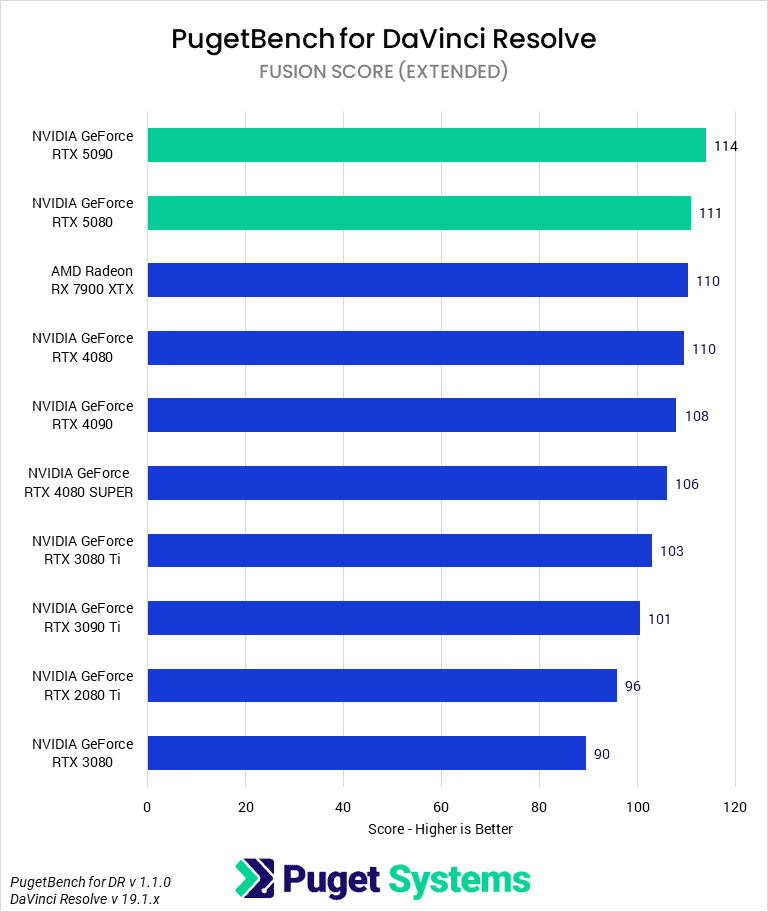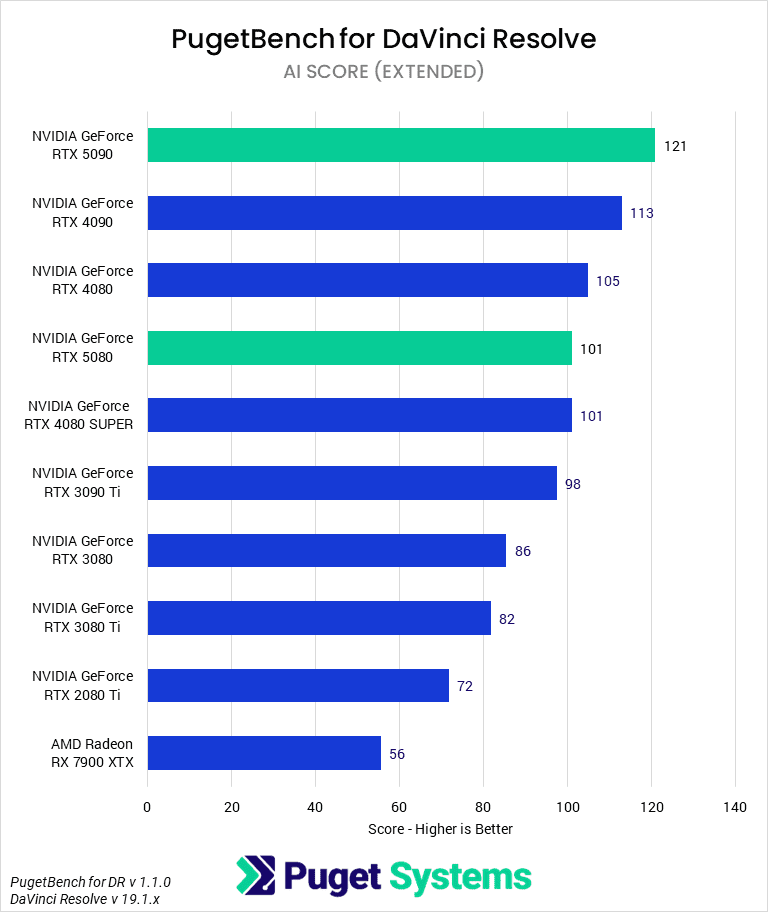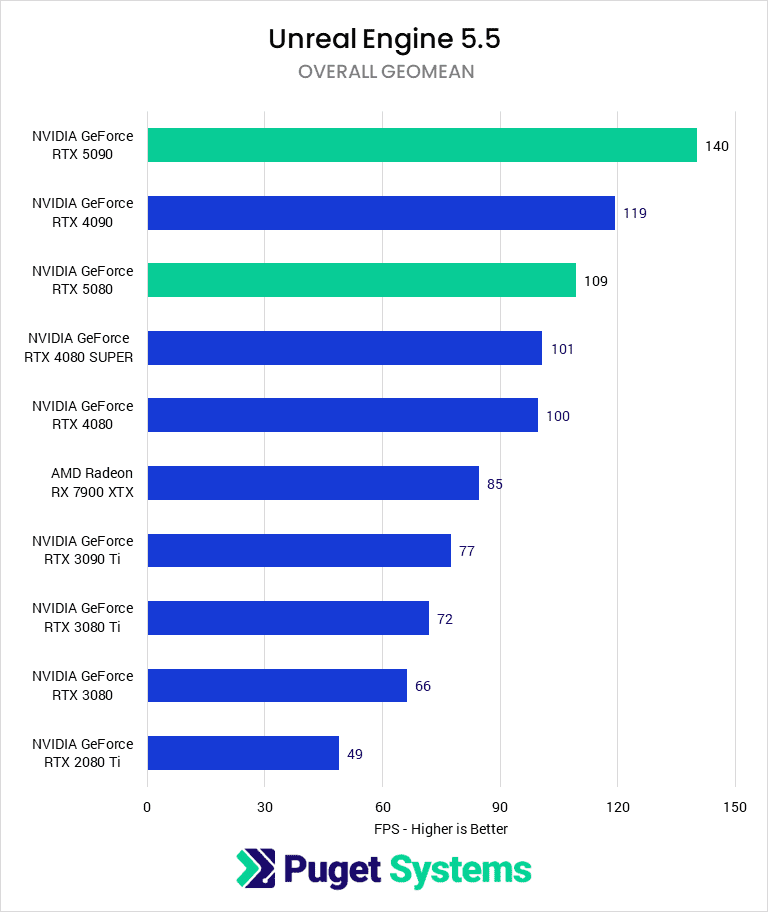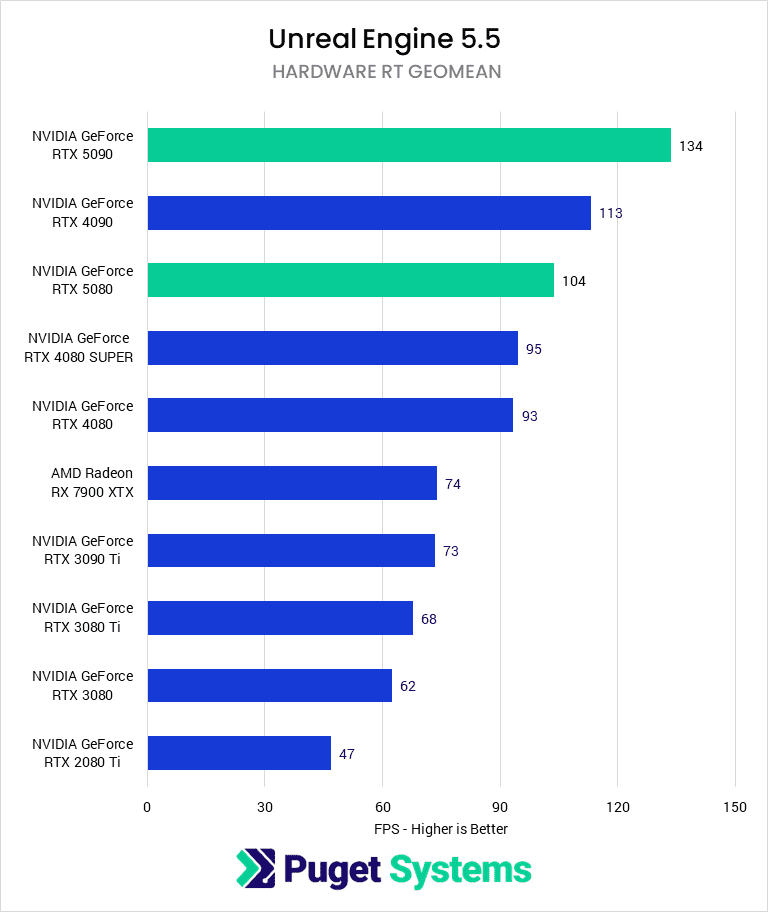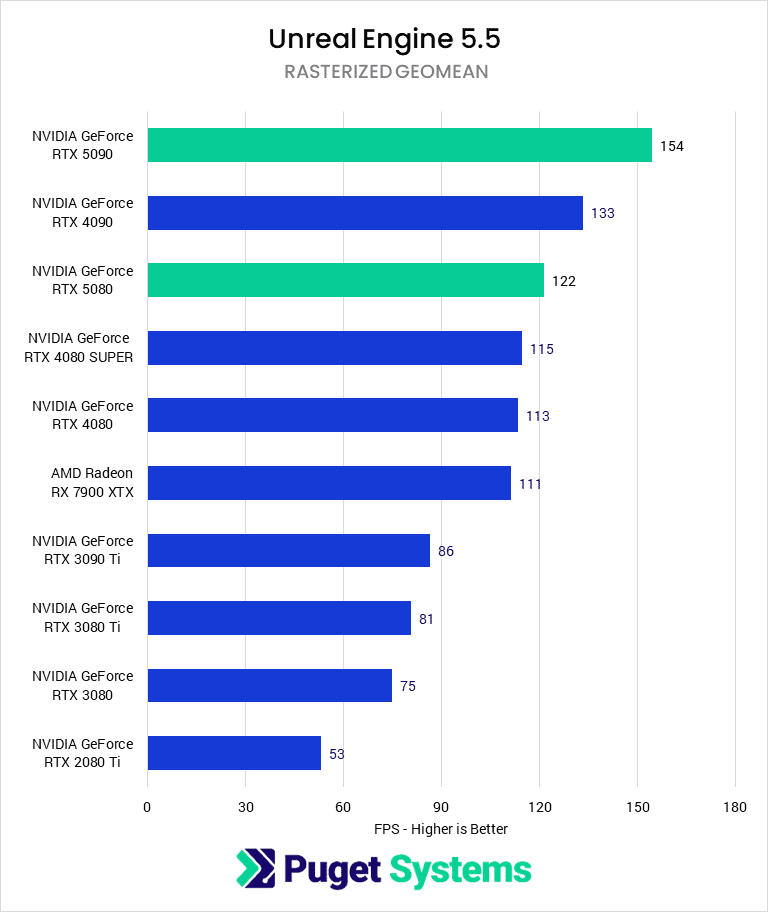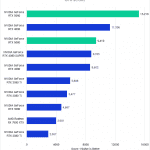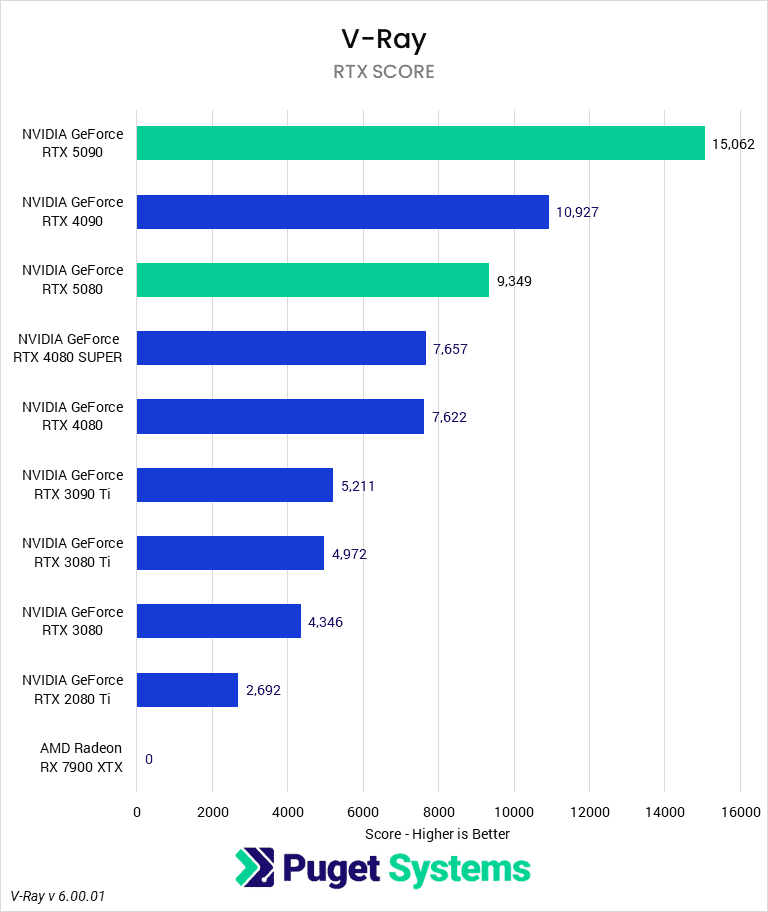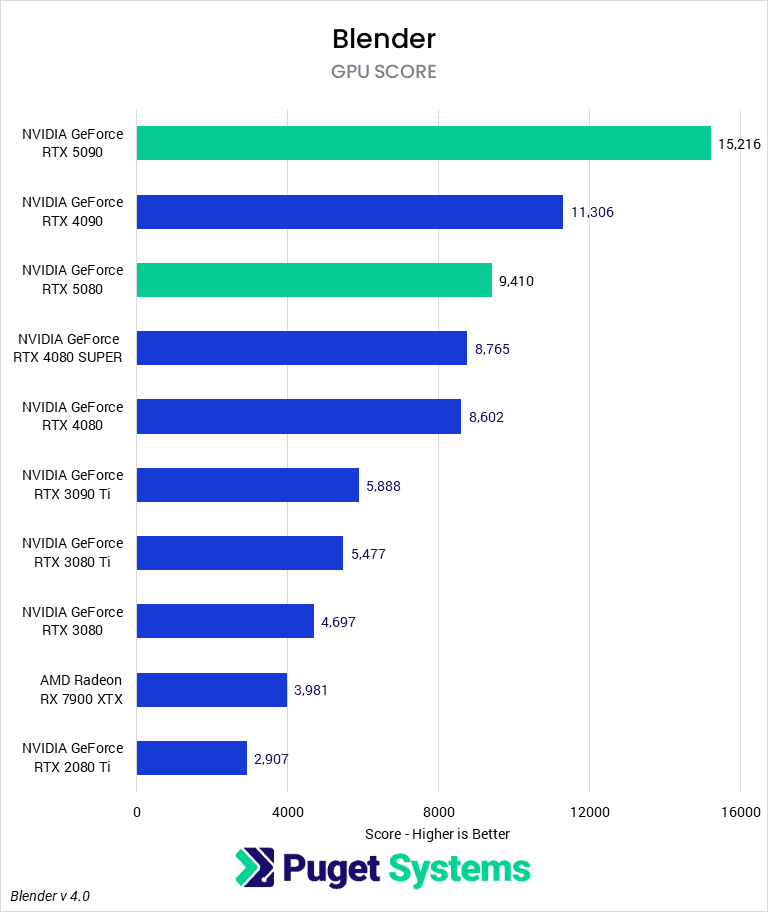Table of Contents
Introduction
At CES, NVIDIA announced its next generation of consumer desktop graphic cards: the GeForce RTX™ 50 series, based on the Blackwell architecture, including the NVIDIA GeForce RTX™ 5080. As we covered last week in our RTX 5090 review, these GPUs promise improved performance in gaming and content creation and feature more and improved CUDA cores, fourth-generation Ray Tracing and fifth-generation Tensor cores, and the latest NVIDIA NVENC/NVDEC media engines. These hardware updates are packaged alongside a multitude of new technologies like DLSS 4, RTX Mega Geometry, and new NVIDIA Broadcast features.
In this article, we will be reviewing the new flagship NVIDIA GeForce RTX 5080. Replacing the outgoing NVIDIA GeForce RTX 4080 SUPER, the 5080 represents what is typically NVIDIA’s high-end workhorse card. The 80-class cards are typically the benchmark against which all other video cards are compared due to their more approachable (though still very high) cost and historical ubiquity—we all remember the 1080 Ti we had in our systems.
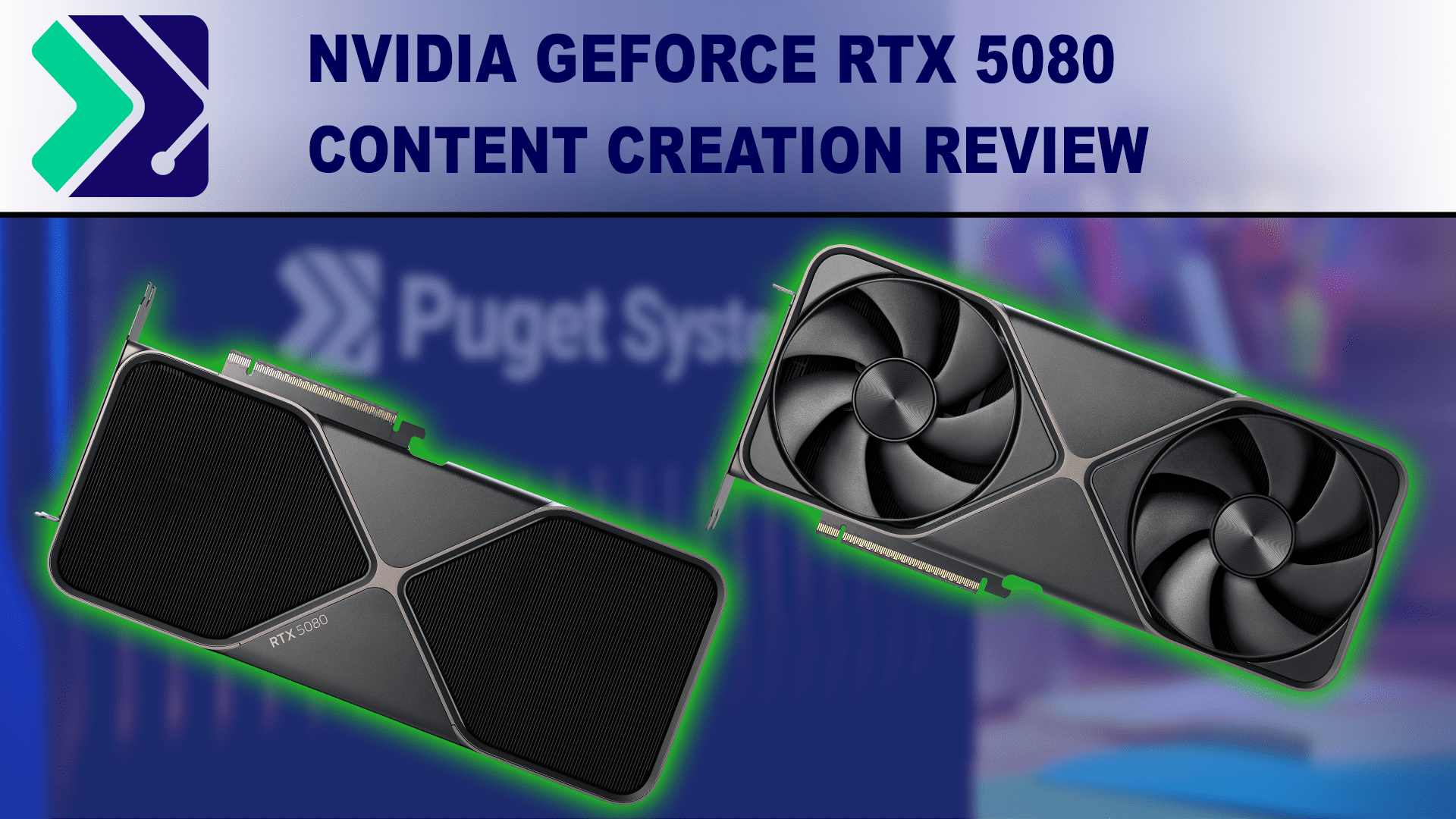
NVIDIA has introduced a number of new features and capabilities with this GPU generation, such as Neural rendering, Mega geometry, and DLSS 4 plus MFG. While we won’t be covering those in this article, we hope to do so in the future. Nonetheless, many of them are exciting for both gamers and professionals, and we continue to be impressed by NVIDIA’s software and feature support. If you are interested in the new features for content creators, we have a blog post available that summarizes everything NVIDIA has announced to date: NVIDIA GeForce RTX 50-Series | Features for Content Creators.
Below, we have listed the most relevant GPU specifications from AMD, Intel, and NVIDIA. For more information, visit Intel Ark, NVIDIA’s 40-series GeForce page, NVIDIA’s 50-series GeForce page, or AMD’s Radeon RX Page.
| GPU Model | MSRP | VRAM | Shader Units | Boost Clock | VRAM Bandwidth | TDP | Release Date |
|---|---|---|---|---|---|---|---|
| NVIDIA GeForce RTX 5090 | $2,000 | 32 GB | 21760 | 2.41 GHz | 1792 GB/sec | 575 W | Jan. 2025 |
| NVIDIA GeForce RTX 3090 Ti | $2,000 | 24 GB | 10752 | 1.86 GHz | 1001 GB/sec | 450 W | Jan. 2022 |
| NVIDIA GeForce RTX 4090 | $1,600 | 24 GB | 16384 | 2.52 GHz | 1001 GB/sec | 450 W | Oct. 2022 |
| NVIDIA GeForce RTX 4080 | $1,200 | 16 GB | 9728 | 2.51 GHz | 736 GB/sec | 320 W | Nov. 2022 |
| NVIDIA GeForce RTX 3080 Ti | $1,200 | 12 GB | 10240 | 1.67 GHz | 912 GB/sec | 350 W | June 2021 |
| AMD Radeon RX 7900 XTX | $1,000 | 24 GB | 6144 | 2.5 GHz | 960 GB/sec | 355 W | Dec. 2022 |
| NVIDIA GeForce RTX 5080 | $1,000 | 16 GB | 10752 | 2.62 GHz | 960 GB/sec | 360 W | Jan. 2025 |
| NVIDIA GeForce RTX 4080 SUPER | $1,000 | 16 GB | 10242 | 2.55 GHz | 736 GB/sec | 320 W | Jan. 2024 |
| NVIDIA GeForce 2080 Ti | $1,000 | 11 GB | 4352 | 1.55 GHz | 616 GB/sec | 250 W | Sept. 2018 |
| NVIDIA GeForce RTX 4070 Ti SUPER | $800 | 16 GB | 8448 | 2.61 GHz | 706 GB/sec | 285 W | Jan. 2024 |
| NVIDIA GeForce RTX 5070 Ti | $750 | 16 GB | 8960 | 2.45 GHz | 896 GB/sec | 300 W | Coming Feb. |
| NVIDIA GeForce RTX 4070 SUPER | $600 | 12 GB | 7168 | 2.48 GHz | 504 GB/sec | 220 W | Jan. 2024 |
| NVIDIA GeForce RTX 5070 | $550 | 12 GB | 6144 | 2.51 GHz | 672 GB/sec | 250 W | Coming Feb. |
| Intel Arc B580 | $250 | 12 GB | 2560 | 2.67 GHz | 456 GB/sec | 190 W | Dec. 2024 |
Compared to the RTX 5090, NVIDIA has taken a more conservative approach with the RTX 5080; the new card has a modest 5% increase in CUDA cores over the RTX 4080 SUPER, a marginal 3% increase in boost clock, and substantial increases in power draw and VRAM bandwidth of 13% and 30%, respectively. We are particularly excited about that last improvement, as constrictions in memory bandwidth were one of our biggest disappointments with the 40-series.
This generation, our singular disappointment is the measly 16 GB of VRAM in a $1,000 card. Especially given the 5090, we were hoping for at least a 24 GB card, though we suspect the memory subsystem does not easily allow for that. The one thing to bear in mind, of course, is that performance increases are not purely from more cores or more frequency but also through architectural improvements, such as from the Blackwell architecture or next-gen Ray Tracing and Tensor cores. Although still expensive, we are also glad to see NVIDIA keeping the $1,000 MSRP rather than trying to ratchet up the price of an 80-class card, as they did with the 4080.
Test Setup
Test Platform
| CPUs: AMD Ryzen™ 9 9950X |
| CPU Cooler: Noctua NH-U12A |
| Motherboard: ASUS ProArt X670E-Creator WiFi BIOS Version: 2604 |
| RAM: 2x DDR5-5600 32GB (64 GB total) |
| PSU: Super Flower LEADEX Platinum 1600W |
| Storage: Samsung 980 Pro 2TB |
| OS: Windows 11 Pro 64-bit (26100) Power Profile: Balanced |
GPUs
| NVIDIA GeForce RTX™ 5090 Driver: 571.86 NVIDIA GeForce RTX™ 5080 Driver 572.12 |
| NVIDIA GeForce RTX™ 4090 NVIDIA GeForce RTX 4080™ SUPER NVIDIA GeForce RTX 4080 NVIDIA GeForce RTX™ 3090 Ti NVIDIA GeForce RTX™ 3080 Ti NVIDIA GeForce RTX™ 3080 NVIDIA GeForce RTX™ 2080 Ti Driver: 566.36 |
| AMD Radeon™ RX 7900 XTX Driver: Adrenaline 24.12.1 |
Benchmark Software
| Premiere Pro 25.1.0 – PugetBench for Premiere Pro 1.1.0 |
| After Effects 25.2 Beta – PugetBench for After Effects 0.98-beta |
| DaVinci Resolve 19.1 – PugetBench for DaVinci Resolve 1.1.0 |
| Unreal Engine 5.5 |
| V-Ray 6.00.01 |
| Blender 4.0 |
For our GPU testing, we have shifted to an AMD Ryzen 9 9950X-based platform from our traditional Threadripper platform. The 9950X has fantastic all-around performance in most of our workflows and should let the video cards be the primary limiting factor where there is the possibility of a GPU bottleneck. This means the results are more comparable to our recent Intel Arc B580 review, but less so to our past GPU reviews. However, we are doing our best to test a variety of past GPUs over the course of our RTX 50-series reviews, so we should have a lot of updated results in the near future. For testing, we used the latest available GPU drivers and tested everything on the “balanced” Windows power profile. Resizeable BAR and “Above 4G Decoding” were enabled for every GPU as well.
In this article, our primary focus will be the new 5080, so we tested it against the most comparable cards from the last few generations: the RTX 4080 SUPER, RTX 4080, RTX 3080 Ti, and RTX 3080. This is in addition to all the cards we tested in our RTX 5090 review, so we still have the RTX 2080 Ti and RX 7900 XTX results as well. We think that the 4080 SUPER and 3080 Ti provide the best comparisons to the 5080 from the last 2 generations, given their launch-MSRPs and specifications, so we will be focusing our analysis on those.
In terms of applications, the new NVIDIA card has some minor compatibility issues at present, which we hope will be addressed with application updates now that NVIDIA has released the CUDA 12.8 toolkit. Specifically, the RTX 50-series is not supported in Redshift (Cinebench) nor Octanebench and has performance issues in Topaz Video AI and V-Ray CUDA rendering. Due to this, we will be reporting results for our standard Pugetbench for Premiere Pro, After Effects, and DaVinci Resolve, as well as Unreal Engine, V-Ray, and Blender.
Video Editing: Adobe Premiere Pro
In Premiere Pro, the RTX 5080 is slightly ahead of the 4080 SUPER in absolute terms but essentially the same in real-world use. However, this is only the overall score, and much of Premiere Pro is not GPU accelerated. In addition, the application hasn’t yet been updated to take full advantage of the new generation of NVENC/NVDEC accelerators. With that in mind, we should look at the individual sub-scores.
In our LongGOP media tests (Chart #2), the 5080 is 5% ahead of the 4080 SUPER and 19% ahead of the 3080 Ti. This makes it a poor single-gen upgrade but potentially good from the 30-series or older. The 7900 XTX is also very strong here, we think largely due to the OpenCL pipeline. However, this is also the area where we expect application updates (specifically, support for HEVC 4:2:2 decoding) may have the most positive impact on the 50-series cards in the future.
Moving on to Intraframe (Charts #3) and RAW (Chart #4) tests, we see no performance advantage over the 4080 SUPER. There is a 20% performance uplift over the 3080 Ti in the RAW score but none in the Intraframe tests. We don’t expect any change in intraframe as those codecs are purely CPU-based, but the overall stagnation of this generation in RAW media is odd; we suspect there may be a performance bottleneck elsewhere that we will need to look into further.
Finally, in GPU Effects (Chart #5), the 5080 is 7% faster than the 4080 SUPER and 40% faster than the 3080 Ti. Taken alongside the other results, this makes the 5080 a solid upgrade over 30-series and older hardware but functionally useless as an upgrade from a last-gen graphics card. Given that the 5070 Ti has the same amount of VRAM, we are curious to see if that will offer a better value proposition in this application.
Motion Graphics: Adobe After Effects
Like we mentioned in our 5090 review, recent updates to After Effects have increased the amount of GPU-accelerated workflows in the application. Many of these are focused on the newer 3D capabilities, so we have updated our Pugetbench for After Effects benchmark to let us analyze performance in these workloads alongside the areas we have traditionally investigated.
In terms of overall performance, the 5080 is 9% faster than the RTX 4080 SUPER and 14% faster than the 3080 Ti. Neither of these are particularly inspiring generational uplifts due in large part to the functionally identical performance between all 3 GPUs in the CPU-bound 2D (Chart #2) and Tracking (Chart #4) scores. The one are where GPU is relevant, 3D (Chart #3) does differentiate them more, with the 5080 gaining a 24% lead over the 4080 SUPER and a 44% lead over the 3080 Ti.
Much like in the past, for most use cases, the GPU is not that relevant for Adobe After Effects. However, if you are interested in exploring the emerging 3D workflow in After Effects, the 50-series offers great performance over past-gen cards, and is very likely worth an upgrade.
Video Editing / Motion Graphics: DaVinci Resolve Studio
Moving on to DaVinci Resolve, the NVIDIA GeForce RTX 5080 takes a 10% lead over the 4080 SUPER, making it tie the outgoing 4090 and outperform the 3080 Ti by 21%. These aren’t great generational gains, but they are a marked improvement from what we saw in Premiere Pro. Much like in that application, though, there are a number of areas that are primarily CPU-bound, so we need to look at the subscores to see where the GPU really makes a difference.
In LongGOP codecs (Chart #2), we see the new NVENC/NVDEC engines utilized for impressive performance gains due to the support for H.265 4:2:2 10-bit media. This propels the RTX 5080 to a 34% lead ahead of the 4080 SUPER and an 86% lead over the 3080 Ti. While we still need to compare the NVIDIA cards to Intel’s Quick Sync, systems that pair the new 50-series GPUs with a Ryzen processor will see a marked upgrade in this media over a similar configuration with a 40-series card.
RAW media (Chart #3) is typically at least somewhat GPU-accelerated, but, much like we saw in Premiere Pro, we appear to be hitting some sort of bottleneck in our overall system. We don’t see a lot of differentiation between cards. This is essentially the same as Fusion (Chart #5), which is CPU-based.
Our GPU Effects tests (Chart #4) so show good differentiation, though, with the 5080 outperforming the 4080 SUPER by 21% and the 3080 Ti by 33%. This is closer to the gen-on-gen upgrade we like to see from GPUs. Unfortunately, the trend reverses again with our AI subscore (Chart #6). Despite being primarily GPU-bound, they have the 5080 tying the 4080 SUPER, though it does still beat out the 3080 Ti by 23%.
Game Dev / Virtual Production: Unreal Engine
Our Unreal Engine benchmark combines a number of scenes at varying resolutions and enabled features (e.g., Ray tracing) to see how various common factors affect GPU performance. We combine those FPS results together to get composite scores. Here, we decided to pull out Ray-tracing and Rasterized scenes as individual sub-scores to see how the new RT cores perform.
Looking at the overall geometric mean FPS (Chart#1), the RTX 5080 is 8% faster than the 4080 SUPER and 51% faster than the 3080 Ti. Much like we saw in our 5090 review, the relative performance between ray traced and rasterized scenes is consistent across the last few generations of NVIDIA cards, so these performance gains are nearly the same for both the RT and rasterized scores. The 5080 is a good skip-generation upgrade but not worth it if you are on a higher-end 40-series card.
Rendering: V-Ray & Blender
For offline, GPU-based rendering, we could only test with two of our usual four benchmarks. At present, the RTX 5080 is not supported in either Redshift (Cinebench) nor Octanebench. Additionally, there is currently a known issue with CUDA rendering in V-Ray, resulting in low performance. We expect that this will be fixed as implementation of the CUDA 12.8 toolkit is rolled out to applications, but it is definitely a note of caution for early-adopters of the 50-series.
In V-Ray RTX rendering (Chart #1), the RTX 5080 is a solid 22% faster than the 4080 SUPER and nearly two times (1.88x) as fast as the 3080 Ti. This is the first area where the 5080 really seems like a great upgrade over the 4080 SUPER. In Blender GPU rendering (Chart #2), the 5080 manages only a 7% performance advantage over the 4080 SUPER, which is fairly disappointing given the V-Ray result; we wonder if this isn’t a driver bug. Nonetheless, the 5080 seems good for GPU rendering, but we have some hesitation endorsing it until we see better support.
How good is the NVIDIA GeForce RTX 5080 for Content Creation?
Overall, the RTX 5080 is a solid GPU that provides good performance nearly across the board. However, following our 5090 review, we are somewhat disappointed by the relatively small performance uplifts over the RTX 4080 SUPER. In some places, the 5090 seemed to justify the price increase over the 4090 with staggering performance increases. For the 5080, the same price seems to get you basically just the same performance in many workloads.
In video editing and motion graphics, the RTX 5080 is about 5-10% faster than the RTX 4080 SUPER and 20-30% faster than the 3080 Ti. There were some standout areas, such as 3D performance in After Effects, with gains double those. DaVinci Resolve is largely the same, with the stand-out areas being the improved LongGOP processing and GPU Effects, but otherwise modest performance improvements. Still, for new-to-PC users or those on even older cards, it offers a solid upgrade.
In rendering applications, the 5080 manages better, with a 10-20% lead over the 4080 SUPER and a 55% to 188% lead over the 3080 Ti. This is definitely a performance jump that may be worth upgrading for even from the 40-series card, and it offers a great value for those using older generation cards. However, there is still the lingering issue of compatibility and performance quirks, so we would recommend buying with caution or holding off for a bit before committing to a 5080 for a rendering system. We are currently maintaining a list of known issues in content creation applications that you can check in on to see when these are resolved.
NVIDIA’s new GeForce RTX 5080 is a great workhorse GPU that provides solid performance across the board and can handle most of the tasks you throw at it. In many workflows, it is only slightly slower than the RTX 5090, so it may end up being one of the better price-to-performance cards of this generation. If you are on a 30-series card or older, it offers a great upgrade, but less so for users on a 40-series card. Especially given the dwindling supply of those previous-generation cards, we expect the RTX 5080 to be an incredibly popular GPU.
If you need a powerful workstation to tackle the applications we’ve tested, the Puget Systems workstations on our solutions page are tailored to excel in various software packages. If you prefer to take a more hands-on approach, our custom configuration page helps you to configure a workstation that matches your exact needs. Otherwise, if you would like more guidance in configuring a workstation that aligns with your unique workflow, our knowledgeable technology consultants are here to lend their expertise.



